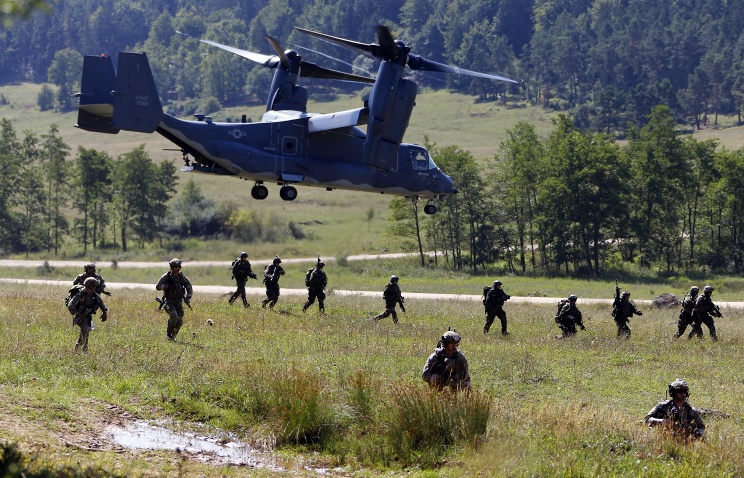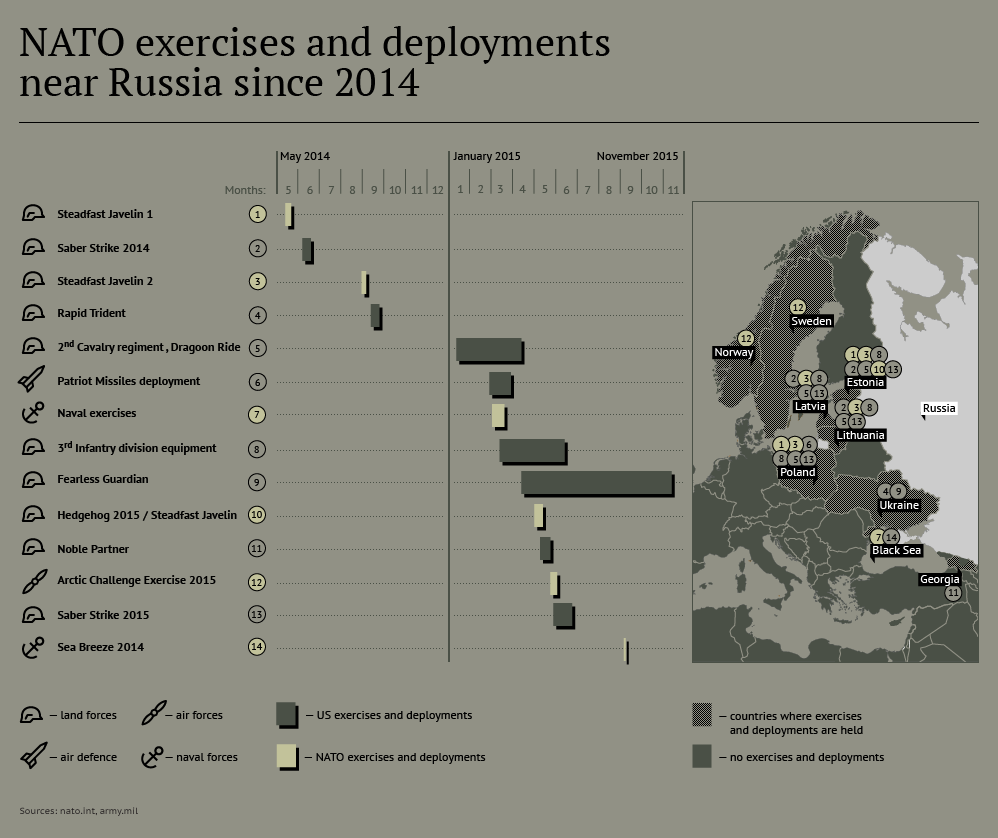- A Russian 'snap exercise' conducted in March 2015, which brought together 80,000 military personnel.
- The NATO 'Allied Shield' exercise conducted in June 2015, which brought under one framework four distinct exercises taking place along the Eastern flank of the Alliance, totalling 15,000 personnel from 19 Members states and three partner states.
Comment: Russian Security Council Secretary Nikolay Patrushev said on Tuesday:
The United States and NATO are increasing their military presence in European states neighbouring Russia. Hotbeds of military tension are being created near our border. There have been continuous attempts at bringing anti-Russian political regimes to power in former Soviet states.This is what Russia has to deal with. In August alone Russia carried out 79 military exercises, focusing on Central Asia. More are scheduled for September, including joint drills with other CSTO members (Armenia, Belarus, Kazakhstan, Kyrgyzstan and Tajikistan).
Both exercises show that each side is training with the other side's capabilities and most likely war plans in mind. Whilst spokespeople may maintain that these operations are targeted against hypothetical opponents, the nature and scale of them indicate otherwise: Russia is preparing for a conflict with NATO, and NATO is preparing for a possible confrontation with Russia. We do not suggest that the leadership of either side has made a decision to go to war or that a military conflict between the two is inevitable, but that the changed profile of exercises is a fact and it does play a role in sustaining the current climate of tensions in Europe. These tensions are further aggravated and elevated into a sense of unpredictability when the exercises are not pre-notified or publicly announced beforehand, as is apparently the case with a number of Russian exercises. In our view, the implementation of the following four recommendations could help to defuse or at least minimize the tensions connected with the increased frequency and scale of the military exercises now taking place:
- It is vitally important to increase NATO - Russia communication with regards to the schedule of exercises;
- Both sides should utilize OSCE channels as much as possible, along with the existing catalogue of Confidence and Security Building Measures (CSBMs) included i.a. in the Vienna Document to increase military predictability;
- The politicians on both sides should examine the benefits and dangers of intensified exercising in the border areas. If Russia or NATO decides at some point that they want to reduce tensions, showing restraint in terms of size or scenarios used in exercises might be a good place to start;
- Conceptual work on a new treaty introducing reciprocal territorial limitations on deployment of specific categories of weapons, backed by robust inspections, should commence as soon as possible.
Comment: Better yet, work towards getting it through NATO and the U.S.'s thick skulls that they do not control the world; that their constant wars of aggression and foreign 'intervention' in the affairs of sovereign nations is not wanted, nor acceptable to the vast majority of the world public. If not for NATO's aggression and the U.S.'s arrogance and shortsightedness, Russia would not be engaging in these war games. It's as simple as that.





What a load of nonsense!
Russia has only responded to Washington/NATO expansion and brinkmanship.
Worthless article, just pushing Western propaganda.